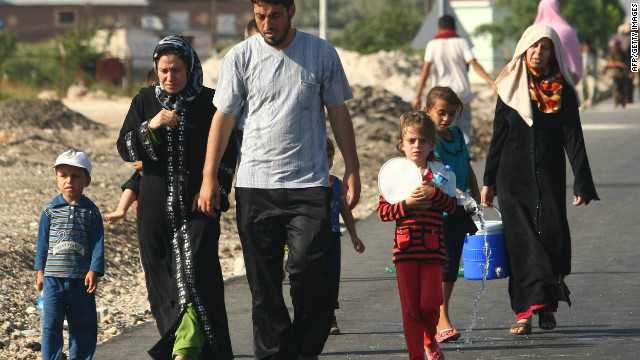Turkey’s ‘inkblot’ test
By Soner Cagaptay, Special to CNN
Editor’s note: Soner Cagaptay is a senior fellow at the Washington Institute for Near East Policy and a GPS contributor. You can find his other posts here. The views expressed are solely those of the author.

Ankara is struggling to accommodate the tide of Syrian refugees looking to enter Turkey. As of this month, there were more than 100,000 Syrian refugees in the country, a number that Turkey has already declared as the “psychological limit” in terms of the number it can host. Ankara can also be expected to try to accommodate many refugees on the Syrian side of the border. Indeed, without apparent interference from the Syrian government, temporary zones are already forming like inkblots across the national boundary from Turkey into Syria. But can Turkey cope?
The refugee influx poses potential security concerns for Turkey, not least because of the potential for armed Kurdistan Workers Party (PKK) members in Syria to use this as an opportunity to cross into Turkey. As a result, Ankara has already temporarily closed some of its border crossings and increased security controls for refugees fleeing across the border. This has translated to increased waiting times for entry, which has in turn only added to the back-log of refugees on the Syrian side of the border.
As the Sunni Arab exodus from Syria continues, areas with favorable geography and nearby border crossings have been confronted with the greatest numbers of refugees, leading to the formation of what could be described as “inkblot” zones, where refugees on both sides of the border live under Turkish care. The Syrian government has all but abandoned such areas.
Since August, Turkey’s official humanitarian relief agency, the Disaster and Emergency Management Directorate (AFAD), has been dispensing aid at key crossings, including to camps inside Syria. Meanwhile, signaling a defensive posture over the “inkblots,” Turkish military forces equipped with anti-aircraft installations have been positioned within range of the camps. According to some reports, helicopters used by forces loyal to Bashar al-Assad have periodically been chased from these areas by Turkish fighter jets.
But as they grow in size and number, these “inkblots” will further erode the integrity of the Turkish-Syrian border, a border that seems to be merging into the terrain itself, especially in areas where large Sunni Arab communities live on both sides of the border crossings.
These areas also have the potential to place genuine strains on ties between Ankara and Washington. After all, there are already policy differences between the two countries on Syria: Ankara appears to want to move fast and potentially with force vis-à-vis Damascus, whereas Washington is exercising caution. So far, Turkey has managed the relationship well, publicly at least. But last month, Turkish Prime Minister Recep Erdogan chided U.S. President Barack Obama for “lacking initiative” on Syria.
An expansion in the number of “inkblots” could put pressure on Ankara to press publicly for U.S. assistance against the al-Assad regime, including asking for U.S. backing to convert the refugee settlements into internationally sanctioned safe havens.
Ultimately, these settlements might best be seen as something of a Rorschach test of U.S.-Turkish, with Ankara viewing them as the stepping stone to the next stage of the push against al-Assad, and Washington seeing them as merely a temporary fix in the ongoing Syria crisis.
via Turkey’s ‘inkblot’ test – Global Public Square – CNN.com Blogs.

Leave a Reply